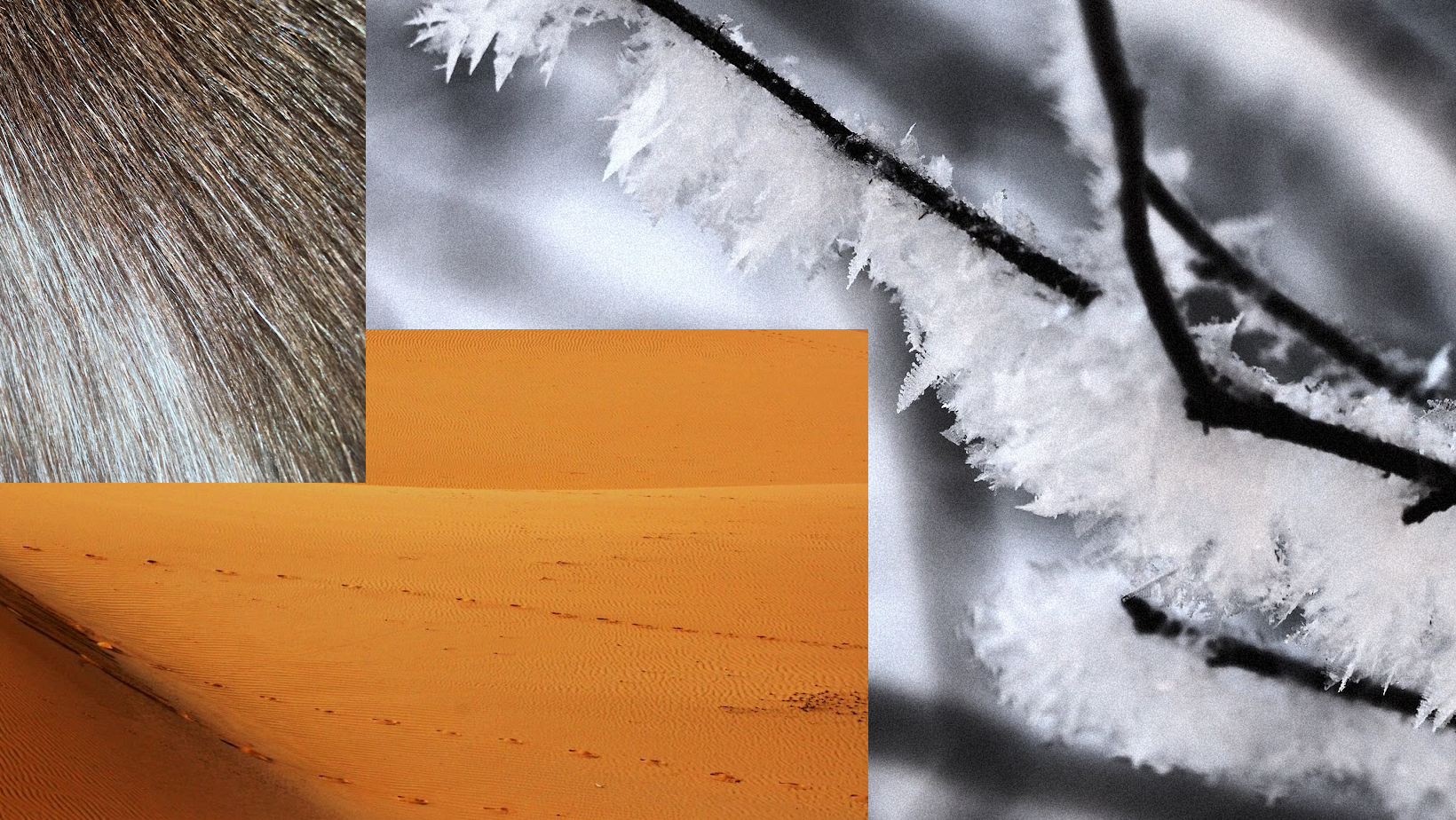When speaking about perfume, we often use words borrowed from other senses. Ingredients become “notes”, like ones you might play on a piano (which is why a perfumer’s desk is referred to as an “organ”). A fragrance can be too “light” for us, and while it’s sometimes unclear whether we’re describing physical weight or colour, our noses can’t truly perceive either. Scent is steeped in sensory metaphor.
To me, an important sense to invoke in our understanding of perfume is touch. Obviously, smells don’t have physical textures or temperatures. But thinking about the tactile qualities of a perfume can be a gateway to their emotional heart.
Perfumers thinking texturally has led to breakthroughs in the world of fragrance. It often requires a metaphoric leap in the mind of each nose; if one forgets about what an ingredient actually is, what might it make you think of? Perfumer Jean-Claude Ellena uses a signature green tea effect to create a luminous quality, like transparent flowing water, which made hits of fragrances like Bvlgari’s Thé Vert and Hermes’ Un Jardin en Méditerranée (you can sample his work at Etiket in Dia Woman and L’Eau D’Ambre Extrême). Similarly, Olivia Giacobetti pioneered the use of fig and other fresh effects to make fragrances that seem airy and subtly cool to the touch, as she does in Premier Figuier and Passage D’Enfer.
On the other side of the spectrum, perfumer Sophia Grojsman’s work often feels fuzzy and thick because of her trademark “hug me accord”: an abstract blend of synthetic jasmine, violet, musk and cedar molecules which makes her fragrances seem cozy and warm (like in Lancome’s classic Tresor). And Andy Tauer has created a rabid cult following with his unapologetic waves of hot spice, which add a dry crackling heat to scents like L’Air du Désert Marocain and Cologne du Maghreb. Composed with care, a perfume can imply closeness or distance; glass, cloth, paper, powder or liquid; warm or cool; movement or stillness.
The fragrances of Maison Crivelli make brilliant use of texture, and they do so in a modern way. Many of them have what I call a “holographic” texture: lifelike, shimmery, and light-reflecting. Creating fragrances with this effect allows the rich amber notes of Lys Sølaberg to feel approachable and relaxed. It allows bold ingredients like woods and spices to seem almost weightless in Santal Volcanique and Bois Datchaï. And it gives rose, which can smell surprisingly thick, even jammy in isolation, a new, breezy lifein Rose Saltifolia, as if the scent were dancing across your perception on a seaside summer wind.
Maison Crivelli fragrances also use textural elements to evoke extremes of temperature, which form surprising contrasts with classic ingredients. A sparkling, icy freshness makes the lavender, juniper and musk in Absinthe Boréale seem enrobed in a delicate frost. The juicy heat of chili and the earthy depth of vetiver makes the orange and bergamot inside Citrus Batikanga sizzle in the bustling heat of a tropical market.
If all this sounds a bit far-fetched, like those sommeliers who tell you you must be able to taste butter in your chardonnay, don’t worry. The ultimate truism of fragrance is that all scent is subjective. But asking yourself which textures, colours or temperatures you sense when you smell a perfume, regardless of what you come up with, can help make sense of a fragrance’s energy, which will, in turn, hint at what it might feel like to wear it. For example, while everybody’s skin is different, a cool, airy or watery fragrance might leave a more casual impression on your skin than something dark, syrupy, sandy or hot.
Finally, looking for textures is a way to rediscover ingredients or scent families you thought you knew. If you love earthy and smoky notes, but you can’t imagine wearing them to the office, you could step away from the hottest, driest Tauer scents, for example, and towards a more liquid and transparent scent like Smoke Show. If light floral perfumes often feel aggressive and headache-inducing, but you love the scent of real flowers, you could try finding scents that are less cool, bright and sharp and more velvety and warm. And if you thought you hated powdery fragrances because they always feel too “classic”, meet Crivelli’s Papyrus Moléculaire or Iris Malikhan, which both take the concept of powder in richer, darker, edgier, and more contemporary directions.
– David, Director of Fragrance at Etiket


